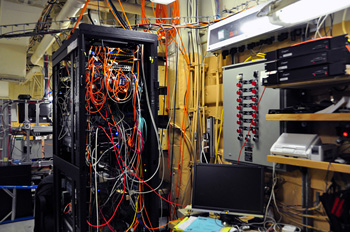September 16th
My heroes have always been explorers. Parry, Ross, Rae, Crozier and the rest of early searchers for the Northwest Passage; the brilliant ice captains Otto Sverdrup, Frank Worsley, Bob Barttlet; consummate professionals, Roald Amundsen and Fridtjof Nansen, tragic incompetents like Franklin, Greely, and de Long; and then of course the great James Cook in his pantheon of one. Queen Maud Gulf, Prince Rupert Sound, Cape Despair, Fram, Erebus, and Terror—the sounds of the names send chills up the spines of exploration geeks. If you tried to make up stuff like the true search for the Passage or the exploration of Antarctica, readers would roll their eyes with incredulity. Those storied days are passed, but we can still dream of voyages across the misty unknown to icy islands where no human foot ever stepped and into treacherous waters where blah, blah, blah. We can go all runny and cringingly romantic, peering at the horizon, those of us with the explorer gene, if we don’t watch out. But there is a modern concomitant, I’m delighted to have discovered, not precisely the same but close enough: the research vessel. The hearts of old explorers would not bleed for our privation. Tomorrow and several days to follow, we will, without stretching the point beyond meaningfulness, press into the unknown. We’re excited to hear that sometime before dawn Saturday Healy will enter loose pack ice looking for a suitably stable floe on which to anchor Dr. Bob’s meteorological station. While armed guards stand polar bear watch, we’ll accompany and perhaps assist the technicians John and Frank out onto the ice while they drill a foundation and anchor the meteorological station to an ice floe. Bob has planned to plant the met station such that the westward flow of ice will carry it to a position north of his main mooring, the one equipped with the Arctic Winch, when winter freeze-up sets in. Thus, he’ll acquire weather data to accompany his oceanographic data, an ideal combination.
Then later in the day on Saturday, conditions permitting as always, everyone will be granted “ice liberty” to go overboard and play on the sea ice. That done, we’ll head southeast toward Amundsen Strait in the Canadian Arctic Archipelago to waters where no detailed oceanographic work has been attempted to search for the eastern reaches of Bob’s Western Arctic Boundary Current. It all sounds neat and definite, doesn’t it? Well, none of it may happen. It all depends on the ice, and ice is not dependable, never was. Bob has budgeted two precious ship days for the met-station deployment, but he’d be ahead of the game if we found suitable ice at first light and wrapped things up and headed east by dark. On the other hand, there may be no ice substantial enough to support the station. How far north should he venture in search of it without sacrificing the oceanography? These are typical chief-scientist questions. Bob doesn’t give orders; Captain Rall does that. But it’s Dr. Bob’s trip; his grant from the National Science Foundation is paying for it. In those old days, an unfortunate ice decision sometimes killed people. Admittedly, we have other things Arctic explorers in the days of sail would envy. For instance, this icebreaker. We don’t need to worry too much about getting “nipped,” as they used to say, and forced to over-winter. Scurvy won’t be a problem aboard Healy. And then there are the Earth-orbiting-satellite systems. We receive a wealth of data including radar and images of the ice with up to 100-meter resolution, but clouds obscure some of them, and there have been plenty of clouds. Therefore, we can find a likely looking region of ice, but we can’t be certain exactly where to plant the station until we arrive on scene and look around. Okay, okay, there are other modern wrinkles. It seems two of three desalinators have broken down. We’re not suffering from dehydration, but the laundry room is closed to conserve water. The hearts of old explorers would not bleed for our privation.
While we’re talking about satellite communication systems, we need to cite the now-common GPS and its revolutionary contribution to everything that moves on land, water, and in the air. GPS liberated oceanography from a particularly limiting uncertainty. Twenty-four satellites in earth orbit speak constantly to a receiver informing it of its geographic position in latitude and longitude with a radius of accuracy about the size of a suburban living room. Since the receiver knows its position from moment to moment, it also knows how fast it’s moving and in what direction. Dr. Bob carefully decides where to place his instruments before he deploys them over the transom. Without GPS, he couldn’t know exactly where he’d put the gear or where to go to get it back. There is no point in meticulously measuring a point in the water column if you don’t know where that point is located. Everything begins with the knowledge of your precise position on a trackless ocean, and now an entire generation of oceanographers take for granted what their predecessors longed for, a constant and precise position fix. I suppose the same could be said about computers and— Hang on. Plans have just changed, 1800 Friday evening. Dr. Bob has decided to make for the ice on Sunday, not tomorrow. He reasons that if we were to steam north now we’d arrive in the vicinity of the ice late afternoon tomorrow. That wouldn’t allow enough time to search out a site for the met station before dark. Not only ice is unpredictable. In fact, this is a clear example of the chief scientist’s task. Dr. Bob has meticulously planned the cruise in his shoreside office fully aware that oceans, weather, and ice don’t work on any schedule but their own. Last updated: September 28, 2010 | |||||||||||||||||||
Copyright ©2007 Woods Hole Oceanographic Institution, All Rights Reserved, Privacy Policy. | |||||||||||||||||||



